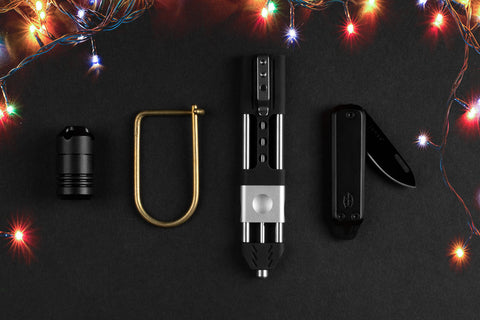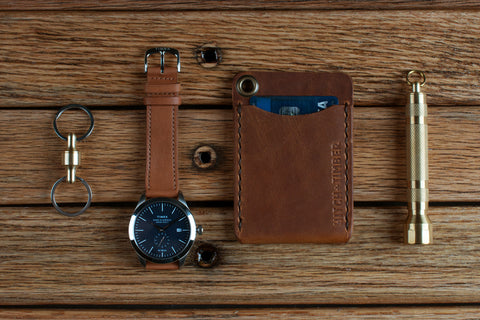Why You Should Always Carry A Pocket Knife
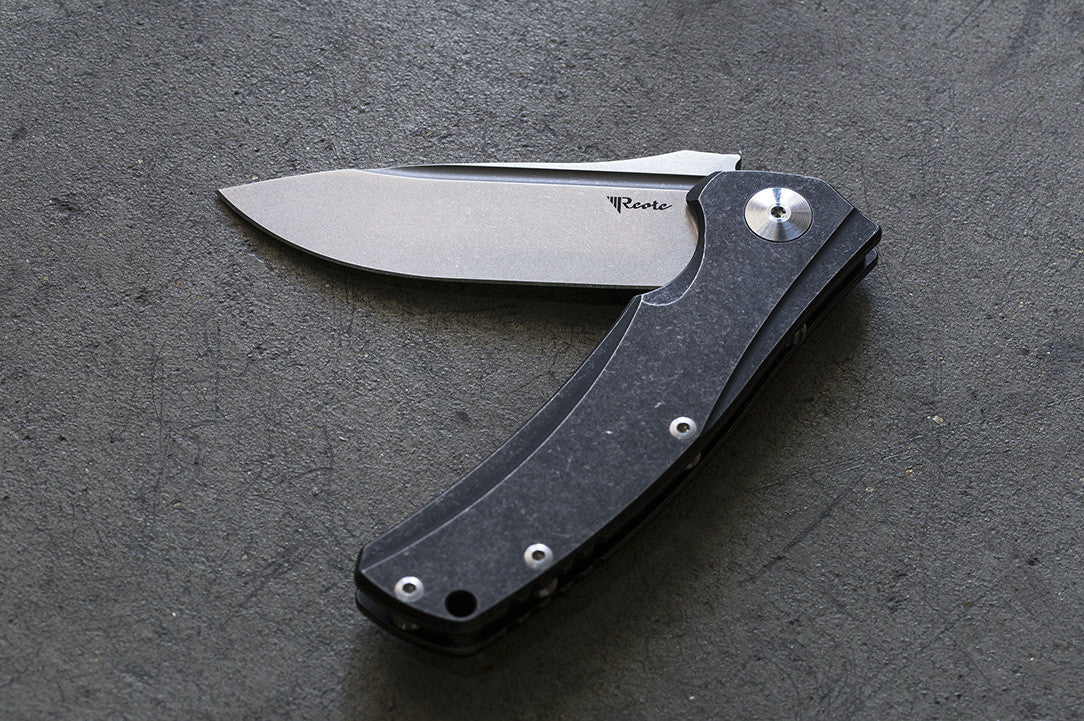
Some of the oldest handmade stone utensils ever uncovered - this excludes simple rocks used for smashing and grinding - are known as ‘Oldowan’ tools. Almost all of these simple devices had some kind of point or edge most likely used for cutting or chopping. Funny thing is, a few of these precursors to what we now know as knives predate the Homo genus. That means that, potentially, the earliest knife was around before our species’ oldest ancestor. Knives, it would seem, have been around longer than the human race.
While the origins of our species are certainly the subject of much heated debate, the fact remains that knives - in one form or another - have been around for just about as long as we have because of their utility. While technology has evolved, affording us the ability to develop countless variations on the classic tool, knives remain largely the same: a blade on one end and a handle on the other. The reason being that knives are possibly the most versatile tool ever known to man. And as the old adage goes, if it ain’t broke, don’t fix it. You’d think that, with so much intrinsic value, everyone would carry one around in their pocket. They don’t. But here’s why you should.
Cutting Edge
For people who are not entirely accustomed to everyday carry, a pocket knife might seem like a foreign, unnecessary, and/or scary thing. And that’s understandable. Humans are made of soft flesh and knives are metal and sharp. You could say fear is an entirely normal instinctual reaction. But you’d be discounting everything beneficial about them in favor of a largely incorrect stereotypical assumption. Knives are not solely weapons. They are multifaceted tools which, when used in proper fashion, can make our lives significantly easier, safer, and better. Allow us to demonstrate.
Utility
The most obvious purpose of any blade - folding or otherwise - is its ability to cut. Which makes sense, as that is for what they were initially invented. And to this day, there are still dozens of routine applications therein. From stray threads on your clothing, to campfire steak, to the horrendous frustration that is plastic clamshell packaging, there are things throughout daily life which you need to cut and a knife is an especially effective way to get the job done.
Convenience
Sure, a pair of scissors are perfect to cut tags or clip unwanted hairs. And you could certainly bring your favorite set of kitchen tools every time you’re off in the wilderness. You could even make use of that rusty old boxcutter and hack open any packages you find on your doorstep. Yes, all of those tools are well suited - even specialized - for those purposes. But then you’d find yourself bogged down with a bunch of extraneous stuff that can really only complete a select group of tasks. With a simple EDC pocket knife, you could handle them all - and more - easily, in a timely fashion, and without redundancy.
Emergency
God forbid you ever find yourself or others in any kind of dire crisis, but life is unpredictable. Sometimes roads are slick, embankments are steep, conditions are unfavorable, and catastrophe lurks. In the case that adversity does befall you, a pocket knife can serve as a survival tool. You can slice through a seatbelt to pull someone from wreckage or cut through fabric to dress a wound. It’s possible to cut tinder and create sparks to start a fire and - in the worst of circumstances - heat a blade to cauterize a wound. Some everyday carry pocket knives even come equipped with a glass breaker, should you need to smash a window for a daring escape.
Defense
Obviously, a knife can be used as a weapon, if the situation calls for it. Still, it needs to be mentioned. Unfortunately, one of the greatest risks to anyone’s personal safety nowadays is other people. And while a knife is no guarantee that you will always be safe, it certainly tips the scales in your favor. Even just flashing your blade is enough to deter most assailants. To be perfectly clear, we are not in any way, shape, or form advocating the use of threats or violence against anyone under any circumstances. We just think it better to be able to defend oneself than not.
Functional Forms
Picking up your first EDC folding knife can seem like a daunting task. Even just trying to upgrade your present knife to something little more advanced is intimidating. There are literally hundreds of options out there and it isn’t easy to skim through them all - or really even a fraction - without some kind of guidance. Rather than throwing caution to the wind and potentially ending up with something sub-par, we’ve taken some of the guess work out and come up with a few things to look for when choosing a pocket folder.
Blade: Generally the first thing people look at when choosing a knife. There are a number of different criteria surrounding blade types including shape (curved, straight, hooked, etc.), edge (serrated, plain, combo), point (drop, spear, tanto, etc.), material (most commonly steel variations), length, and color. The most important of these metrics is, however, the material. The material of the blade will determine its durability, lifespan, and ability to hold an edge.
Handle: Alternatively called the ‘hilt,’ the handle of any folding knife is where the structural strength of the knife is derived. It is also where the locking mechanism is housed and into where the blade folds. They are commonly made from metals, carbon/fiberglass/nylon composites, wood, bone, or rare stone/gems/minerals. Metals and synthetics tend to be stronger and better for heavy use, whereas natural materials often look more elegant and refined.
Lock: This is the device which keeps the blade in place when a knife is open. Not all knives come with a locking mechanism, however. The classic Swiss Army Knife, for example, stays open with spring tension - this is known as a ‘slipjoint’ - but can be closed with a relatively small amount of pressure applied to the back of the blade. Some common lock types include liner lock, frame lock, and lockback. And a few knife makers have proprietary locking systems which are exclusive to their products.
Deployment: The method through which the blade is unfolded from the handle. The three most common types of deployment are manual (requiring full exertion on the part of the wielder), assisted (a spring mechanism helps open the knife in part), and automatic (like a switchblade, requiring virtually zero effort on the part of the wielder). There are also supplementary metrics such as single or double ball bearing systems, which add to the ease and swiftness of deployment.
Legality
Laws vary widely from state to state - and country to country - regarding pocket knives. In some places, bearing almost any type of knife (whether it is a folder or not), is illegal. In others, the requirements surrounding lawful carry are much more lax. In any case, make sure you are familiar with the rules and regulations of your particular place of residence and any jurisdiction into which you may venture. Otherwise you may end up with a ticket, having your knife confiscated, being hauled off to jail, or worse. Always be informed to avoid any unwanted trouble.
Stay Sharp

Opinel No. 8 Trekking Knife
Out of the Savoie region in France, Opinel has been making folding knives since 1890. The No. 8 Trekking knife is a variation on the veteran brand’s classic folder. Featuring a 3.25” 12C27 Sandvik stainless steel blade and a 4.25” beechwood handle - which comes in several colors - this manual folding knife truly is the most bang-for-your-buck budget pocket folder. And each of them comes with a Virobloc safety ring (which is a rotating blade lock) and a leather lace for expandable carry options.

Spyderco Dragonfly 2
One of the most respected knife makers in the EDC world, Spyderco hinges their business on a process they call C.Q.I. - which stands for Constant Quality Improvement. They put their classic Dragonfly model through the ringer and came up with this stellar sequel. The 2 still features the brand’s leaf-shaped 2.25” VG-10 steel blade (though it is now flat-ground), ergonomic handle with front-finger choil and spine cusp (both now featuring jimping), and the blade-to-handle geometry that gives this 5.563” knife a much larger feel. The handle is composed of fiberglass reinforced nylon with a screw together construction and tip-up wire clip. For a smaller pocket knife, this workhorse can certainly meet most everyday carry needs.
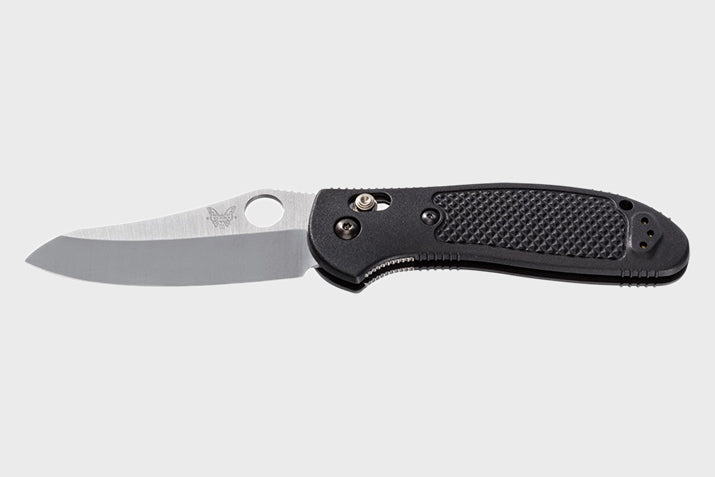
Benchmade Griptilian
The Griptilian family of knives from Benchmade are some of the most lauded folding pocket knives out there. And one of the coolest things about getting one directly from the Oregon City-based company is that their site allows you to customize certain aspects of your knife. While there are some constants - each knife features Benchmade’s AXIS proprietary assisted deployment, the blade is 3.45” and the length overall is 8.07” - you can choose between a drop-point, sheepsfoot, or tanto blade; five different handle colors schemes; and either nylon or G10 handle material. Keep in mind that not all of the options are compatible with one another.

The James Brand The County
Harkening back to the kind of folding pocket knife we all wanted when we were kids, the James Brand has created a sleek reimagined version of a classic wood-handled folder in their County Knife. Almost more of a work of art than a working tool, this slipjoint-style knife features a 2.5” 12C27 Sandvik steel straight-backed blade and a 3.5” walnut and 416 stainless steel handle (with 416 stainless steel hardware). It also features a small hole in the hilt if you want to string through some leather lace or paracord for expanded carry options. Like we said, this knife is almost more art than tool.
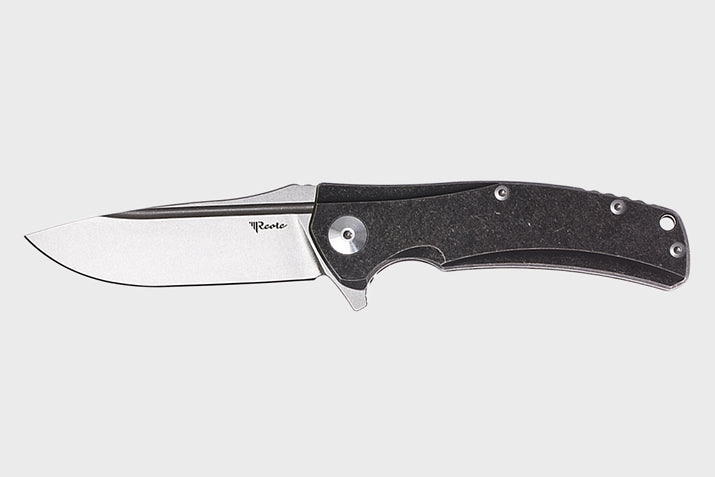
Reate Knives Horizon-C
Heftiest of the knives on this list, the Reate Knives Horizon-C weighs in at 6.34oz. But don’t let the heft of this knife get you down, as every ounce is deliberately rugged. The 3.75” CPM-S35VN drop tip steel blade has an HRC rating of 59-60 and is housed in a 3D machined 6AL4V titanium handle - with a titanium pocket clip, sturdy frame lock, and multi-row ball bearing deployment system. And the blade was ground using Reate’s Freeze Edging Skill - a method by which the blade is cooled during the sharpening process for improved edge retention. This robust manual-flip folding knife is built to last.
© Photography by Gallantry



